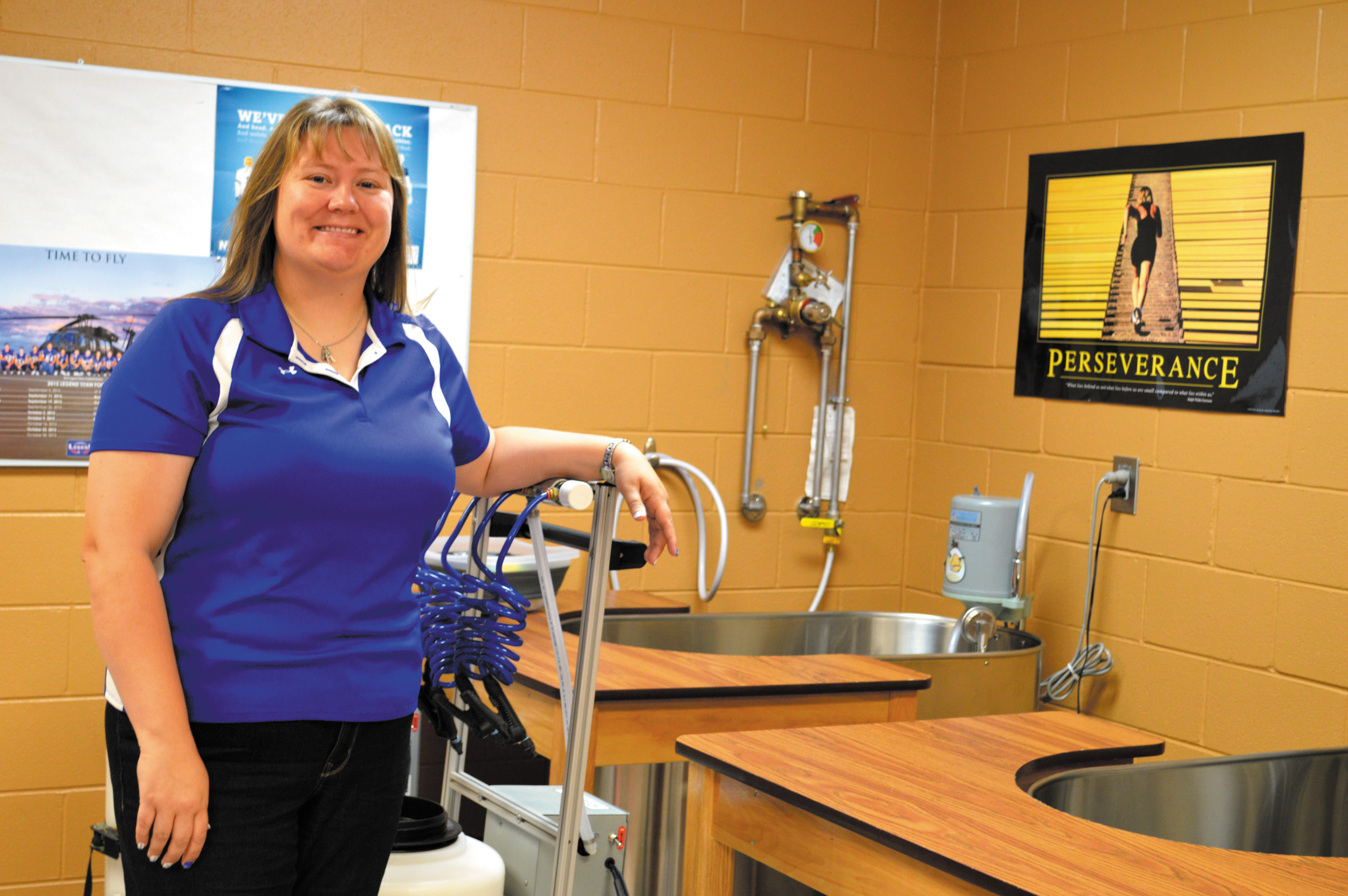
If it hadn’t been for an athletic trainer, Josh Boatright would most likely be dead.
But thanks to Piper Thompson’s knowledge and gut instinct, the Legend High School senior saw a doctor who diagnosed a heart condition corrected by surgery.
And today, he’s playing on the defensive line for the Titans’ football team.
“I can’t give her enough praise,” Boatright’s mother, LeAnne, said of Thompson. “I love her because she saved my son’s life.”
Thompson is an example of how high school athletic trainers have become more knowledgeable and respected.
All are certified and nearly 70 percent have master’s degrees. Injury prevention, evaluation and rehabilitation are some duties, but trainers also follow up on concussions, monitor the weather, make sure water is available, help determine whether athletes can return to play and often provide referrals to outside doctors or specialists.
“Athletic training is really a lot more involved in education, and the skill set is much higher than people really understand,” said Bridget Younger of Children’s Hospital Colorado Sports Medicine program.
Trainers’ roles vary by school district.
Douglas County School District hires its own athletic trainers but contracts with Children’s for assistant trainers. Adams 12 employs head trainers from Children’s. Jefferson County and Elizabeth hire from Panorama Orthopedics and Spine Center in Golden. Littleton Public Schools uses trainers from Physiotherapy Associates of Greenwood Village. Two schools in the Cherry Creek school district hire trainers from Rocky Mountain Youth Hospital, and others employ trainers who are also certified teachers.
Head trainers have to monitor practices, attend as many events as possible — especially football games — and make sure each activity for their school is covered by a trainer from one of the schools competing.
“There is a lot going on,” said Chris Matthewson, who has been Ponderosa’s trainer for 23 years. “We just try to be in the middle of it.”
Lindsay Anderson, the head trainer at Ralston Valley, noted that times have changed.
“Sometimes just taping people up is what our profession is known for because we are good at that, but that’s just a piece of what we do,” Anderson said. “The athletic training profession in general has been fighting to be seen as medical professionals and not just somebody that hands out Band-Aids and does basic first aid. Our knowledge is a lot deeper than that.”
Advancements in technology and science mean treatments for injuries are constantly changing.
“There’s a little bit of change every year,” Anderson said. “There is some new science out telling us how we should be treating athletes to give them optimal care.”
Matthewson also has seen the job evolve over the years, particularly with concussions.
“We’ve always taken concussions seriously, but we have much better management mainly because people know it and understand it,” he said. “One of the biggest changes is I’m doing more of the rehab in the post-surgical care because health care has gotten to where you have surgery, three or four visits with the PT and then they say off you go. We do a lot of that and kids love it because they get to stay with friends and teammates and not get shipped off to a physical therapist.”
Trainers also have a say about when an athlete can resume play. Sometimes, before making the decision, they consult with coaches and parents.
“Even if a kid comes to me with a doctor’s note and the doctor’s note says he or she can play but I’m not comfortable with that, I can always be more conservative than the doctor’s notes and even be more aggressive,” said Thompson. “If I’m not comfortable, we have a policy set up with our district that allows for us to say, ‘No, I’m sorry, you are not ready to play yet.’”
Many schools get help from high school students who obtain clinical hours working with trainers. The students learn skills required to be an athletic trainer and perform duties like retrieving water and hot packs to help trainers.
Heritage High School trainer Rhiannon Oberto worked at Valparaiso and Kent State but prefers the high school level.
“I’m really impressed with high school trainers,” she said. “I guess I did not realize how much more they have to do. I’m not discrediting a university athletic trainer, but they have a huge support system because there are a whole bunch of them in one facility. Here, right now, it’s just me. I love this atmosphere a lot better.”
ORIGINAL ARTICLE:
http://littletonindependent.net/stories/Athletic-trainers-in-metro-Denver-area-keep-athletes-moving,198775